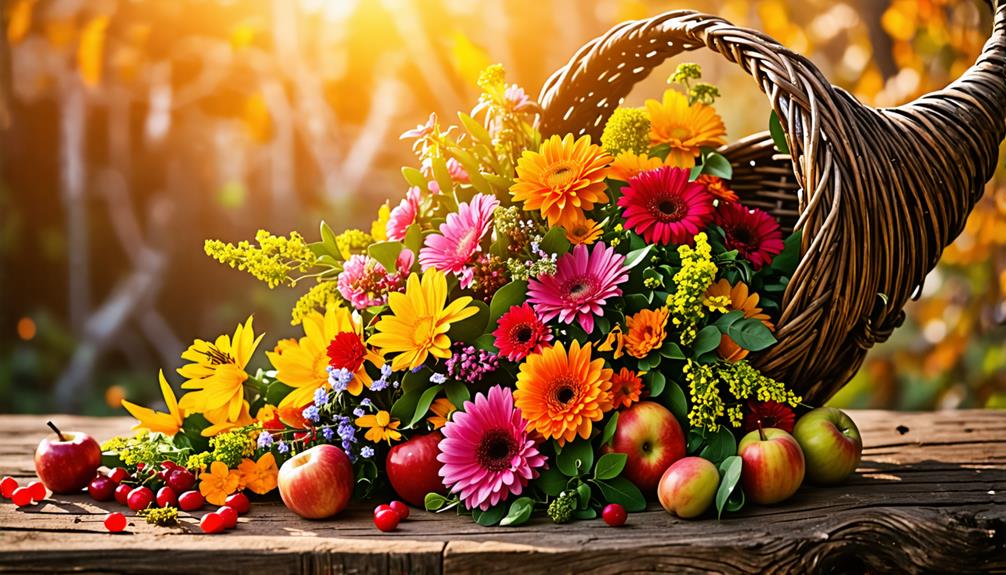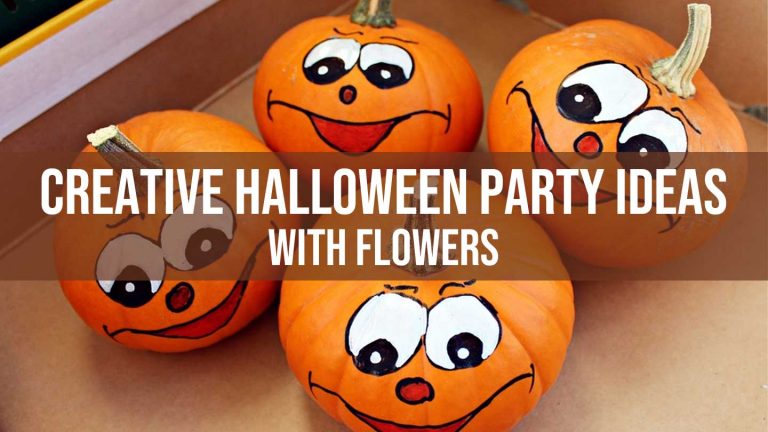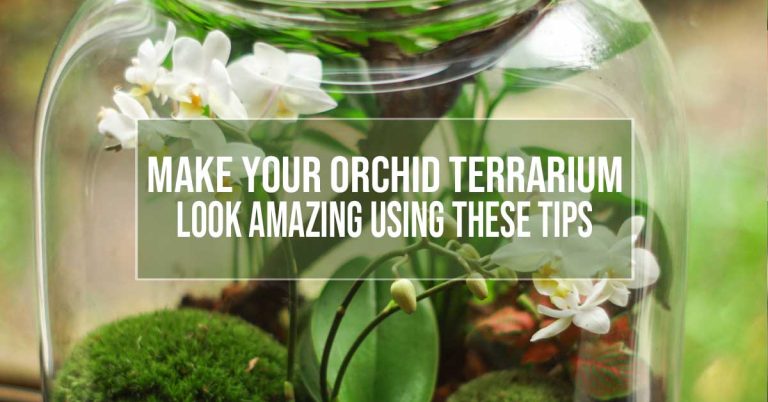You’ve likely seen cornucopias adorning Thanksgiving tables or autumnal displays, but have you ever considered creating one yourself?
This iconic symbol of abundance isn’t just for the fall season; it can be a versatile centerpiece year-round. With a few key elements and creative flair, you can craft a stunning arrangement that captures the essence of plenty.
Whether aiming for a traditional harvest look or something more unique, understanding the basics of cornucopia design will set you on the path to success. But there’s more to this craft than meets the eye—let’s explore what makes a truly memorable cornucopia.
Symbolism of Abundance
The cornucopia, also known as the horn of plenty, symbolizes abundance, harvest, and prosperity in many cultures. You’re tapping into this rich symbolism of abundance when you create a cornucopia arrangement, making it perfect for autumn celebrations and Thanksgiving displays.
The horn-shaped basket overflowing with fruits, vegetables, and flowers represents nature’s bounty and the earth’s generosity.
The cornucopia’s origins trace back to ancient Greek mythology, where it was associated with the goat Amalthea, who nurtured Zeus.
In your arrangement, you’re continuing this tradition of abundance and nourishment. By including a variety of seasonal produce and flora, you’re showcasing the diversity of the harvest season.
Select Seasonal Produce and Flowers
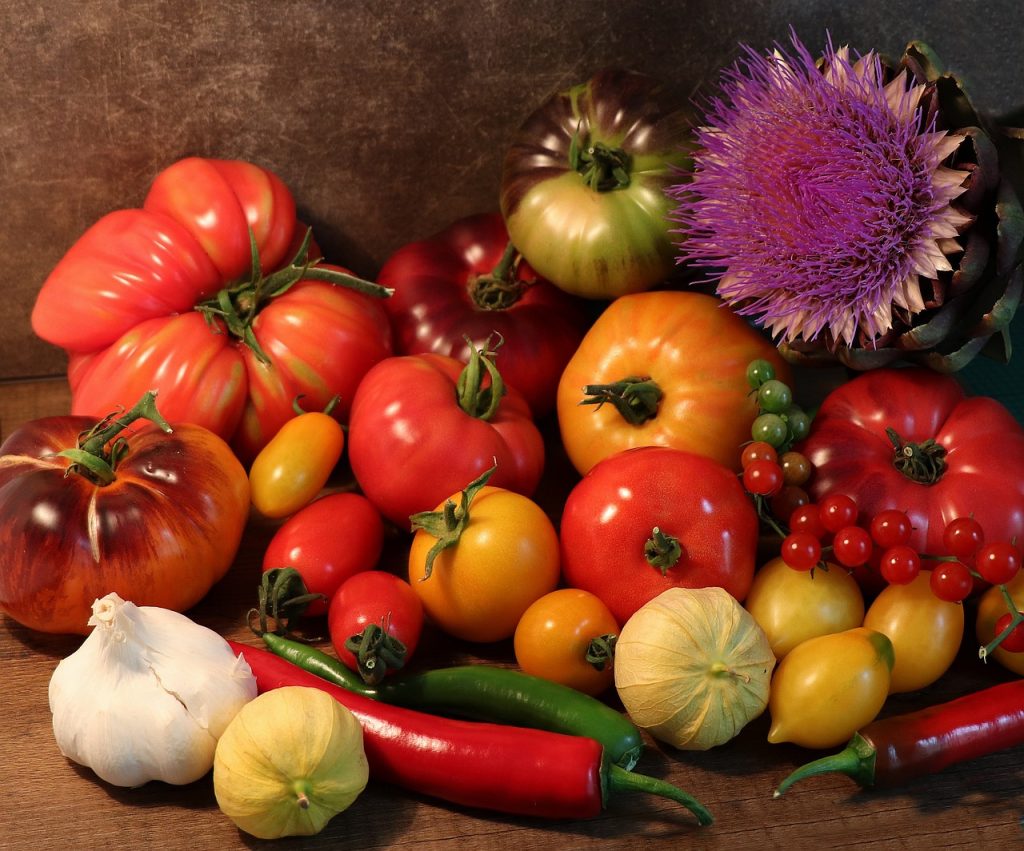
Choosing the right seasonal produce and flowers is vital for creating an authentic and visually appealing cornucopia arrangement.
Start by selecting a variety of fall fruits and vegetables, such as apples, pears, gourds, pumpkins, and squash. Colorful options to include, like deep red pomegranates, golden corn, and vibrant orange persimmons add visual interest.
Don’t forget to incorporate autumn flowers and foliage. With their rich, warm hues, chrysanthemums, sunflowers, and marigolds are excellent choices. Add texture with wheat stalks, dried leaves, and pinecones. Contemplate using seasonal berries like cranberries, rosehips, or hypericum berries for pops of color.
Aim for a mix of sizes, shapes, and textures selecting the produce and flowers. Choose items that are firm and unblemished to guarantee longevity. If you’re using real produce, opt for slightly underripe fruits and vegetables as they’ll last longer in your display.
Remember to reflect on the overall color scheme of your arrangement. Stick to traditional autumn colors like oranges, reds, yellows, and browns for a classic look, or experiment with unexpected hues for a more modern twist.
Local Farmers’ Markets

Local farmers’ markets offer a treasure trove of fresh, seasonal produce and flowers perfect for your cornucopia arrangement. You can easily source unique, locally grown items to make your display stand out. You’ll find fruits, vegetables, and flowers that aren’t always available in supermarkets.
Look for vibrant, colorful produce like mini pumpkins, multicolored squash, or unusual varieties of apples. Fresh herbs and edible flowers can also add fragrance and visual interest. Remember to choose items with different textures and sizes to create depth in your arrangement.
Display Cornucopia Year-Round
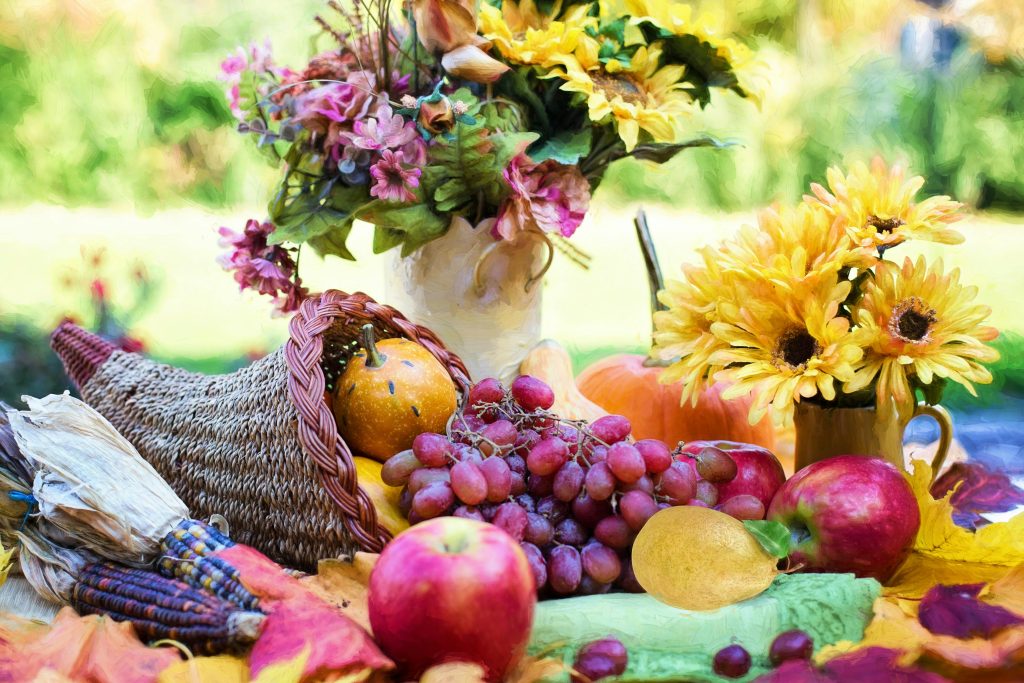
Versatility shines through when you adapt your cornucopia arrangement for year-round display, transforming it from a seasonal centerpiece into a dynamic focal point for any occasion.
Achieving a year-round look is easy. Select a neutral-colored cornucopia basket that complements various decor styles. Change the contents seasonally, keeping the arrangement fresh and relevant.
For spring, fill your cornucopia with pastel-colored eggs, fresh flowers, and budding branches.
In summer, opt for seashells, starfish, and vibrant tropical fruits.
As autumn approaches, return to the traditional harvest theme with gourds, pumpkins, and colorful leaves.
Winter calls for pinecones, holly berries, and silver or gold ornaments.
Don’t limit yourself to natural elements; incorporate decorative items that reflect your personality or current trends. Consider using fairy lights to add a magical touch year-round.
Place your cornucopia in different locations throughout your home to keep the display interesting. On a dining table, it serves as a conversation starter, while on a mantel or entryway table, it creates a welcoming atmosphere.
Closing Thoughts
You’ve now created a stunning cornucopia that symbolizes abundance and gratitude.
Don’t limit yourself to autumn displays; adapt your arrangement for different seasons and occasions.
Remember, you’re not just decorating; you’re telling a story of plenty and thanksgiving.
Keep exploring local markets for fresh ideas, and don’t be afraid to mix in personal touches.
Your cornucopia is a celebration of nature’s bounty and your creativity.
Want More Design Tutorials Like This?
If so, sign up below and I’ll let you know whenever I post or update something here.
We will only use your information to send you our blog updates. You can change your mind anytime by clicking the unsubscribe link at the bottom of any email you receive from us. You can find details about our privacy practices here.
You can also follow me on social media for updates. And if you enjoyed what you just read, please share it with your friends.
Your support has been amazing, and I look forward to continuing our journey together to explore the wonderful world of flowers and plants!
Til next time,


